EPDM Roofing 101 - PODCAST TRANSCRIPTION
October 10, 2023 at 10:00 a.m.Editor's note: The following is the transcript of a live interview with Curt Friedholdt from Johns Manville. You can read the interview below or watch the Lunch & Learn.
Heidi J. Ellsworth: Hello, and welcome to a Lunch & Learn from Roofers Coffee Shop. Lunch and Learns are meant for you in the office, and we want to bring you the best information, from the very beginning of what it is, to what is happening in the industry, you'll find it all here on Lunch and Learns. My name is Heidi Ellsworth, and I am very excited today, because this is continuing a series of what is products. We've talked about PVC, we've talked about modified bitumen, and today, we're going to talk about EPDM. So we asked Curt Friedholdt from Johns Manville to join us so we could talk about, what is EPDM, the history, installation, and benefits? So before we get started, I would love to welcome Curt to the show. Why don't you introduce yourself, tell us a little bit about you and Johns Manville?
Curt Friedholdt: Okay, great. My name is Curt Friedholdt, I'm the EPDM product manager at Johns Manville. I've been in the roofing industry for 17 years now, and really enjoyed my time. It's a great industry, and Johns Manville has been a wonderful company to work for over the last couple of years.
Heidi J. Ellsworth: So today, for this Lunch and Learn, our learning objectives are the history and longevity of EPDM, the installation of EPDM, and the benefits of EPDM. So for our first learning objective today, history and longevity of EPDM, let's start with the very first question, Curt, what does EPDM stand for?
Curt Friedholdt: Ah, I get that one a lot, actually. Yeah, EPDM stands for ethylene, propylene, diene, monomer. But there's a trick to that, actually, the EPDM that we use in the roofing industry is actually a tripolymer, so the name's not actually correct, but it's been that name for so long that that's just what it is.
Heidi J. Ellsworth: No one's going to change it. So, which part of the EPDM is no longer there?
Curt Friedholdt: So monomer would be single, and it's a tripolymer, so there's three polymers in there.
Heidi J. Ellsworth: There you go.
Curt Friedholdt: Anyway, chemical stuff is above my pay grade, but that's essentially what it comes down to.
Heidi J. Ellsworth: So Curt, let's talk a little bit about the history of EPDM. I know it started in 1963, was when it first was invented. Let's have you tell us that story, and give us a little bit of the history up to today.
Curt Friedholdt: Yeah, so the 60s is when it was first put into sheet format, and even thought about using a roofing application. But EPDM goes back a little farther than that. So a lot of people think rubber roofing, EPDM is rubber. It's not actually rubber from a rubber tree, so it's actually a synthetic rubber. And it was developed really along the World War II timeframe when resources were tight and things were pretty crazy out there, so it got developed by several different companies along the line there. 60s is when people started thinking about some other uses for it, and one of them being, hey, why don't we make a big sheet out of it and throw it on top of a building, see how it does? Yeah, it turns out, it worked really well.
Heidi J. Ellsworth: It worked really well. And throughout the years, EPDM has just grown in popularity. Tell us just a little bit about what you saw in the growth of EPDM since the 60s.
Curt Friedholdt: Yeah, so from the 60s, you get the 70s, with the oil crisis and things like that, and they were always looking for alternatives to what was mostly built-up roofing at the time, so layers and layers of asphalt. And so, EPDM was an alternative for that. So throughout the 80's, EPDM's popularity ... 80's and 90's was probably the heyday for EPDM, so a very, very popular product. I saw a lot of improvements in the seamings throughout that time, and there's still roofs out there from back in that era that are still performing today.
Heidi J. Ellsworth: Yeah, I remember some of that, since I have worked in the industry for a while now. Well, okay, let's talk about ... I mean, there's a lot of terms that go around EPDM. So what is thermoset?
Curt Friedholdt: Yeah, so when you look at single-ply membranes, it's kind of divided into two categories, thermosets, which is EPDM, and thermoplastics, which includes your PVCs and your TPOs. So thermoplastics can be welded to each other, so the way the seaming goes for both of them is, you use a heat welder. EPDM can't do that, it's vulcanized rubber, so once it's gone through the vulcanization process, it is what it is, you can't melt it into itself anymore, so you have to use a steam tape of some sort, or glue, or whatever it might be, and that was kind of a history in the process of improvements over the years
Heidi J. Ellsworth: I'm finding that out. Excellent. And how is it formulated? What is the mixing process and formulation that makes EPDM?
Curt Friedholdt: Yeah, so you have your EPDM polymer that's actually clear, it's not black like people think, right? There's some processing oils that go in there, some additives and fire retardants, and things like that, so it doesn't burn. And then, the big part of that is carbon black. So carbon black is what makes it black. Carbon black is also an incredibly UV resistant material, so it's really one of the primary factors that keeps EPDM going and going for many, many years.
Heidi J. Ellsworth: That's great. And then, the process map for EPDM, how does that look?
Curt Friedholdt: Yeah, so in the thermoplastics, the machinery needed to create them is much, much smaller. So the footprint for that is, you're just putting some liquid down a chute, and extruding it out with a sheet in the middle, or some scrim to keep it together. Now, EPDM has a little bit longer process than that. So for EPDM, you first have to mix it together, so you mix all those things together, melt it, extrude it. We extrude, not everyone does, but we do, and that gives a lot cleaner sheet, fewer pinholes, and more consistent mill thickness. So once it gets extruded down into the sheet, then it still needs to be cut and vulcanized in, essentially, a giant pressure cooker. So heat and pressure, over time, will cure that product out. So then, you have to cut it into those correct widths and lengths, and so, EPDM has multiple different options for that, whereas some of the other membranes don't.
Heidi J. Ellsworth: So let's go to our second learning objective, which is the installation of EPDM. Give us just kind an overview of how EPDM membranes are installed, and then we're going to talk about some of the different aspects of that. So first of all, just for the people who are brand new to the industry, who don't know, or haven't been up on a roof, how is it installed?
Curt Friedholdt: Yeah. Well, there's three primary ways to install it. One is fully adhered, which is just like it sounds, right? You're essentially gluing it to the subsurface, whatever that might be, insulation or a cover board. There's mechanically fastened, so at that point, you're using the seams as an area where you're fastening it into the building, and then it's loose between those. And then, there's ballasted. So in ballasted, you have lots of rocks or pavers that are over the top of the membrane that are holding it down. So each of those methods can be used for EPDM.
Heidi J. Ellsworth: I've seen a lot of ballasted roofs walking in my career, so there are a lot out there. Bot as much today, but boy, they last a long time.
Curt Friedholdt: They do, there's some areas of the country that they're still very popular. The rock actually helps protect the membrane, additionally, from the sun and elements, so those membranes can tend to last pretty long.
Heidi J. Ellsworth: Yeah, it lasts a long time. Okay, so talk a little bit about sheet widths. You have different widths, and how does that work?
Curt Friedholdt: Yeah, so most PVC and TPOs are going to come in 10 or 12-foot. There's a little bit wider ones out there, too, but it's pretty limited on what that is, based on the machinery and the way that those are produced. Because EPDM can be vulcanized, and prior to that process, it can be manipulated, we can actually do much larger sheets than that. So when we're extruding out our sheets, they're 10-foot wide, but then it goes onto a table where it's cut and slid over, and then another piece comes in, same thing, and then it can be, essentially, squished into the last piece, so you can go up to 50 feet wide.
So your dimensions for width went from this way to this way, and much, much wider. So because of that, we have multiple widths that are available, so tens, twenties, thirties, forties, fifties, sixteen eighths, which sounds odd, but 16 foot 8 inches is 50 feet divided by three, so that's why. So we can cut them in those various widths for your applications. And the big wide ones are specifically really used in a lot of the ballasted applications, you can lay a big, huge shield over the top of your building without having a bunch of seaming to have.
Heidi J. Ellsworth: You read my mind, because that's exactly what I was going to ask you, on those really big, wide, 50-foot sheets, brought up by a crane and put out.
Curt Friedholdt: You have to have the equipment, because it gets pretty heavy at that point, but if you can do it that way, for those big ballasted jobs, if you don't have a lot of penetrations and you've got a big, wide open roof surface, you can put big, huge sheets down over the top of that. And a lot of times, you don't even have to fasten your installations down, so you save [inaudible 00:09:44], you save in glues. And then, that ballast over the top of the EPDM really just holds the entire system down.
Heidi J. Ellsworth: Yeah, and I think ... I don't know, ballasted roofs look kind of cool when you're looking at them from up above, and you see all the rock. I don't know, I always thought they were kind of great looking. Okay, so we talked about the application methods, actually, the last time, but talk just a little bit about the tapes. So you have these different ways of installing fully adhered, mechanical, ballasted, but the tape is really important for all those seams.
Curt Friedholdt: Yeah, well, I mean, the first point where you could have an issue a lot of times, is going to be in your details and penetrations and your seams. The sheets themselves, unless you poke a big hole in it, are probably going to be okay, so you've got to make sure that those seams are going to hold over time. And initially, they were using some glue to put those tapes together, but they had some issues with that. But over the years, the industry has created a pretty wide variety of really solid, [inaudible 00:10:45] tapes that are used to seam those things together. And there've been studies that have shown that where the seams are is actually stronger than the field itself now, so got that fixed.
Heidi J. Ellsworth: And in tapes, and correct me if I'm wrong on this, but they have both, right? The type that you can apply with rolls, you apply, but you also have some that come with tapes already applied to the sheets, right?
Curt Friedholdt: Yeah, so if the contractor wants to save a little bit of time up on the roof, they can get sheets that already have seam tape applied to the one side, with a release liner on it, lay it out that way. You put the other sheet over the top, pull that release liner down, roll it in, you're done.
Heidi J. Ellsworth: Done. That's nice. It's very nice. Okay, and seaming, I know we just talked about that, but just to kind of finish that up, how important it is for good seaming, and for them to be checking those seams with the tape, and whether it's already applied, factory applied, or whether it's rolls, talk to us a little bit about the quality control and what contractors are doing to make sure that that seaming is where it needs to be.
Curt Friedholdt: Yeah, so you want to make sure that other surface that's coming down onto that tape has been primed, and that primer has flashed off properly, and you get that over the top of the tape, and then you want to roll that in really well. And then you want to take a probe, and just check to make sure that that seam is good all the way through there, because like we said, that's a point where you can have issues if you don't get it just right.
Heidi J. Ellsworth: Right. And even if you have rocks on top of it, water goes through rocks. Okay, let's go to our third learning objective, and that is the benefits of EPDM. So Curt, kind of starting out, it seems to me like one of the great benefits is just the fact of what a long history it has, back to the 1960s, with proven performance. Can you talk a little bit about that?
Curt Friedholdt: Yeah, so EPDM has been around a long time, like you said, and there are still roofs out there from the 80's that are still performing. They may have been rethemed and taken a look at here and there, but some of the membrane itself is still there, so like I said, that carbon black, and the fact that EPDM stretches, so a lot of these other materials have a scrim in them that keep them from moving. So buildings move, so when your building moves, if your membrane on top of your roof can move with it a little bit, that's great. EPDM stretches up to 300%.
Heidi J. Ellsworth: Wow, that's great. And for everyone out there listening, whether you're in sales at the front office, on whatever part of the business, these are key points when you're selling EPDM, too, to be able to talk about that history. And this is all available, I know, at Johns Manville, I've seen the history of, it's very interesting. But I think one of the buzzwords that we have out there right now, more than ever, is sustainability. And people may not think of EPDM as sustainable, but it really is. Talk about its lifecycle, and kind of where you're seeing the sustainable along with recyclability of EPDM.
Curt Friedholdt: Yeah, so I think one of the aspects of sustainability that maybe isn't getting enough press is, how long has your system been on your building? So if you have to replace it every 10, 12, 15 years, whereas you can get a material that might go 30 years or more, did you really save anything by using maybe a different material, or was the one that's going to last 30 years or more, more sustainable, and it's going to last you longer? So that history is there, I think it makes a big difference. And EPDM is recyclable, so they make playground equipment and all kinds of different things out of EPDM. There are some programs out there to recycle that stuff, and we're really proud to help with that.
Heidi J. Ellsworth: Yeah, it's so important, I mean, that is what people are looking for, especially in the architectural community. When you're talking to certain building owners, definitely property management, they're looking for this information, they want to know about the sustainability, and how it's recyclable. But I want to talk a little bit, and you said it just a minute ago, how it can stretch, and the elasticity of it, but let's talk about the difference between reinforced versus non-reinforced EPDM.
Curt Friedholdt: Sure. So the other thermoplastics all have a scrim in the middle, so polyester-based, usually, scrim, that keeps the material together. EPDM, it's not required, so once you vulcanize it, you can keep it stretchy, but it'll still stay together.
Heidi J. Ellsworth: That's nice.
Curt Friedholdt: However, if you want a reinforcement in there, you can. A couple of applications that you can use that for, mechanically fastened EPDM systems would require some reinforcement in there. Because of that stretchiness, if you just put fasteners down the seam and didn't adhere it in any way on the field, that's just going to pull and stretch and balloon, and things like that. So if you put a scrim in there, that's going to hold it in place. It also helps with hail resistance, so it really helped with hail, which has become a bigger and bigger issue these days, as well.
Heidi J. Ellsworth: You do a lot of pre-made accessories that also are labor savings, and we all know right now, labor is key. So talk to us a little bit about that full assembly and those pre-made accessories, and how that's helping the contractors with labor.
Curt Friedholdt: Sure. Now, and just single-plys in general have really taken over the majority of the industry, and a lot of that isn't just because they work, it's because labor is an issue. It's always hard to find more people to go out on hot summer days up on roofs. So if you can make it simpler for them, the simpler or quickly they can do their job, the better, so we provide a lot of pipe boots and corners, and all kinds of things that are already pre-made, so you can just install them really, really quickly, and get off and get to your next job.
Heidi J. Ellsworth: Yeah, I remember when that first came into the market, the pre-made accessories, and it is a huge time saver for the people, men and women, on the roof, who are installing. So really, as you're all looking at that full system, if you are watching this from operations or from estimating, something you really want to think about and look at is the whole system and those accessories. So for the audience out there, the contractors, especially for the salespeople, the estimators who are listening, where do you recommend ... What are some of the primary types of buildings, the EPDM, or regions, locations, wherever the EPDM is used the most, or what you would recommend really looking at using EPDM?
Curt Friedholdt: Yeah, so EPDM being a black product versus some of the other thermoplastics that are primarily white, heating days versus cooling days becomes a factor. So if you live somewhere where you have more heating days than you do cooling days, it can be a benefit to having a darker material up on your roof. It can also aid with snow and ice melt in the wintertime, so you won't get as much condensation within your system. You don't have those loads on top of your building if you have heavy snows. So the North is primarily where EPDM is done, and the Midwest and the Northeast are the biggest areas, population-wise and climate-wise, for that.
Heidi J. Ellsworth: [inaudible 00:18:04], yeah.
Curt Friedholdt: But the North, Northwest, as well.
Heidi J. Ellsworth: What about types of buildings, as in hospitals, or like you said earlier, talking about the 50-foot on large expanses, maybe warehouses or industrial? Where do you see a lot of the EPDM going that direction?
Curt Friedholdt: Yeah, so for the large panel, ballasted type projects, that's going to be a lot of warehouses, so we're perfect for that. But as far as the other places that we see EPDM used a lot, it's a lot of schools, hospitals, like you said, so places where they're going to be hanging onto their building for a long time, and they want to make sure [inaudible 00:18:38] perform really well for 20, 30 years or more, EPDM is a really, really good one for it.
Heidi J. Ellsworth: So Curt, everybody now knows what EPDM is, the learning objectives, the history and longevity of EPDM, installation of EPDM, and the third one, benefits of EPDM. So now, tell us, since you've got everybody's attention and their interest, how do contractors or roofing companies get involved with either specking, installing, estimating more EPDM? What's your recommendations for them to bring this as one of their offerings in their business?
Curt Friedholdt: Sure. Well, the simplest way is just to go to jm.com. We have a really easy website that's easy to navigate. Go to the commercial roofing, click on EPDM, there's all kinds of three part specs in there that you can download. There's information on all the accessories, detail work, whatever it might be. And you can always find me, [inaudible 00:19:36], give me a call.
Heidi J. Ellsworth: Well, and you can find all this information on Roofers Coffee Shop on the Johns Manville directory, how to get ahold of them, more history, more information about EPDM Roofing. But I tell you what, this has been perfect, it is a perfect introduction, Curt. Thank you so much for joining me on this Lunch and Learn, and sharing all your wisdom and knowledge with everyone out there.
Curt Friedholdt: Yeah, thanks for having me.
Heidi J. Ellsworth: Thank you, and thank you all for listening. Please do not forget your discussion sheet. Use it to have a conversation with everyone in your office to be able to go through and really understand what EPDM is and how it can help your business. Thank you so much for being here today, be sure to watch all of our Lunch and Learns under read, listen, watch, navigation. They are every month, and we are also always looking for photos from you to send to us so we can send the lucky winner every month, a free lunch. So enjoy, thank you so much for being here today, join us next time on Roofer's Coffee Shop Lunch and Learn.
Recommended For You
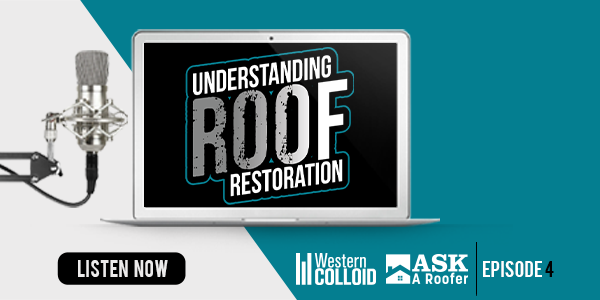
Understanding Roof Restoration Episode 4 - Hail Damage and Fluid Applied Reinforced Roofing - PODCAST TRANSCRIPTION
Read More ...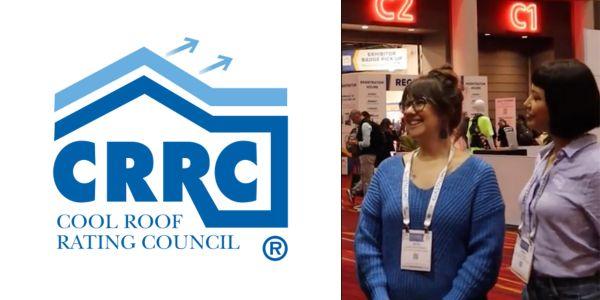
Meet the Cool Roof Rating Council - TRANSCRIPT
Read More ...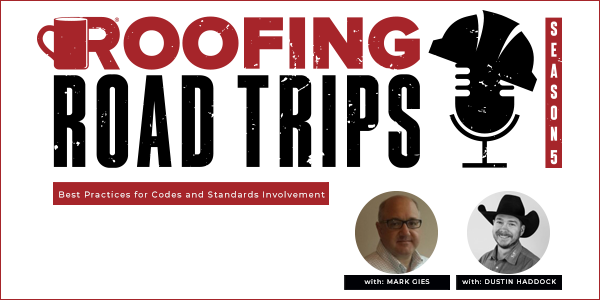
Mark Gies & Dustin Haddock - Best Practices for Codes and Standards Involvement - PODCAST TRANSCRIPTION
Read More ...












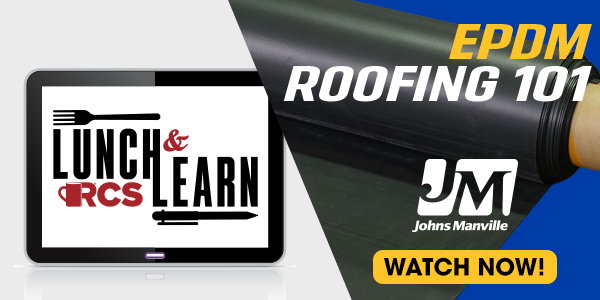




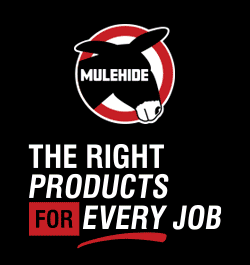

Comments
Leave a Reply
Have an account? Login to leave a comment!
Sign In